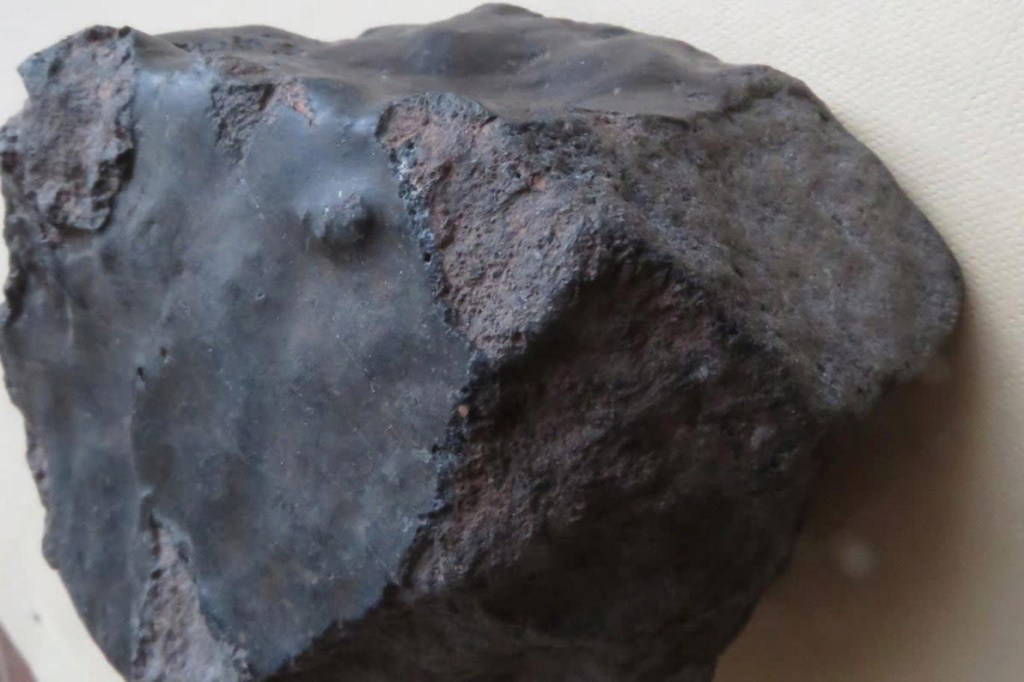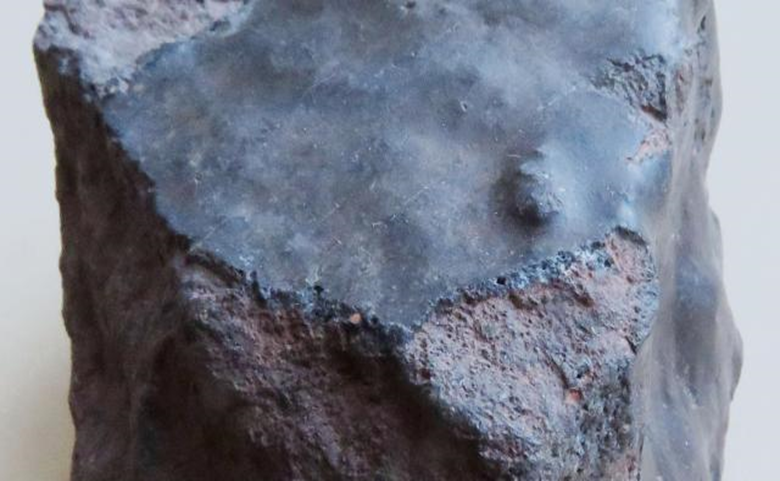Researchers speculate that a rock ejected from the earth may have "bounced back" to it as a meteorite

The researchers found that the rock had a shiny shell called a "molten crust" (CNRS-France)
The reddish-brown stone may have been ejected into space about 10,000 years ago, in the first such case discovered.
A strange dark stone recently found in a remote part of the Sahara Desert may be the first-ever known case of a rock being blasted from Earth and returning to the planet as a meteorite thousands of years later.
Scientists, including Jerome Gatacica of the National Center for Scientific Research in France, suspect that the dark reddish-brown stone, found in Morocco in 2018, may have been ejected into space about 10,000 years ago after an asteroid hit Earth, and remained in orbit before impact. planet again.
The researchers found that the rock had a shiny sheath called a "molten crust" that typically forms when the surface of space rocks entering Earth's atmosphere at high speeds begins to melt.

The scientists said: "The presence of a strongly developed molten crust indicates that the rock named 'NWE 13188' is in fact a meteorite."
Traces of alternative forms of the elements such as beryllium, helium and neon have also been identified on the rock at low concentrations in an odd shape.
The researchers said: "This concentration is very low for a meteorite , which means that the transition time to Earth is very short, on the order of a few thousand years."
This discovery prompted scientists to conclude that the rock had a "very brief" but "significant" exposure to cosmic rays for about 10,000 years.
While this initial discovery confirmed that the rock is in fact a meteorite, it is not clear if it actually originated on Earth.

In unreviewed research on the rock presented at an international geochemistry conference last week, scientists said the rock has some chemical properties similar to volcanic rocks on Earth.
"Therefore, we consider 'NWE 13188' as a meteorite, which was launched from the Earth and then returned to the Earth's surface."
However, it remains unclear how the rock was launched from Earth into space in the first place.
The scientists said: "The launch process - due to an asteroid colliding with Earth or direct ejection during a volcanic eruption - remains to be determined."
In further testing, the researchers hoped to assess whether the rock contained argon captured from Earth's atmosphere.
Such a plucked Argonne, they said, "ought to be especially plentiful," in a rock that rose from the earth.
Source: websites

